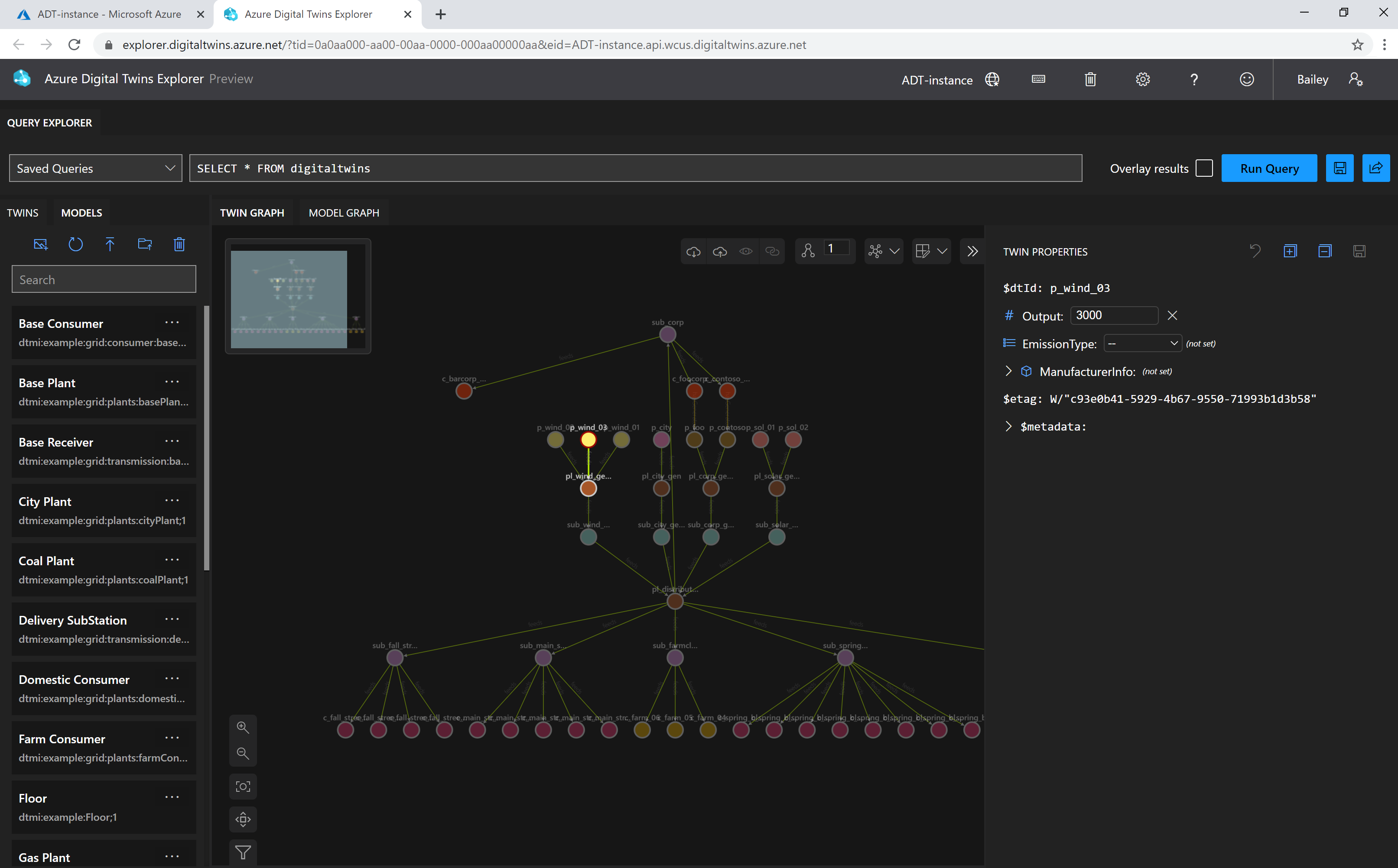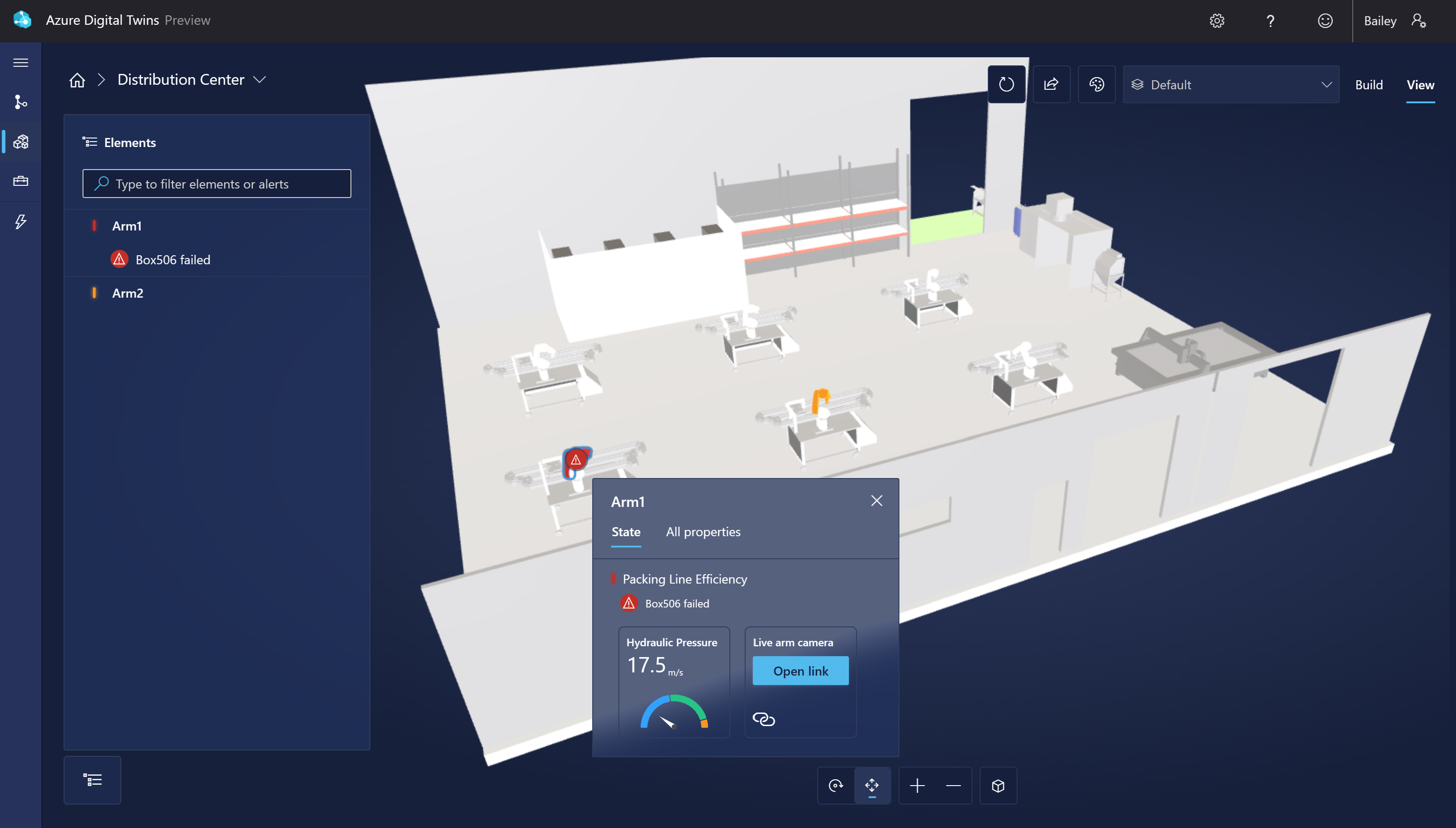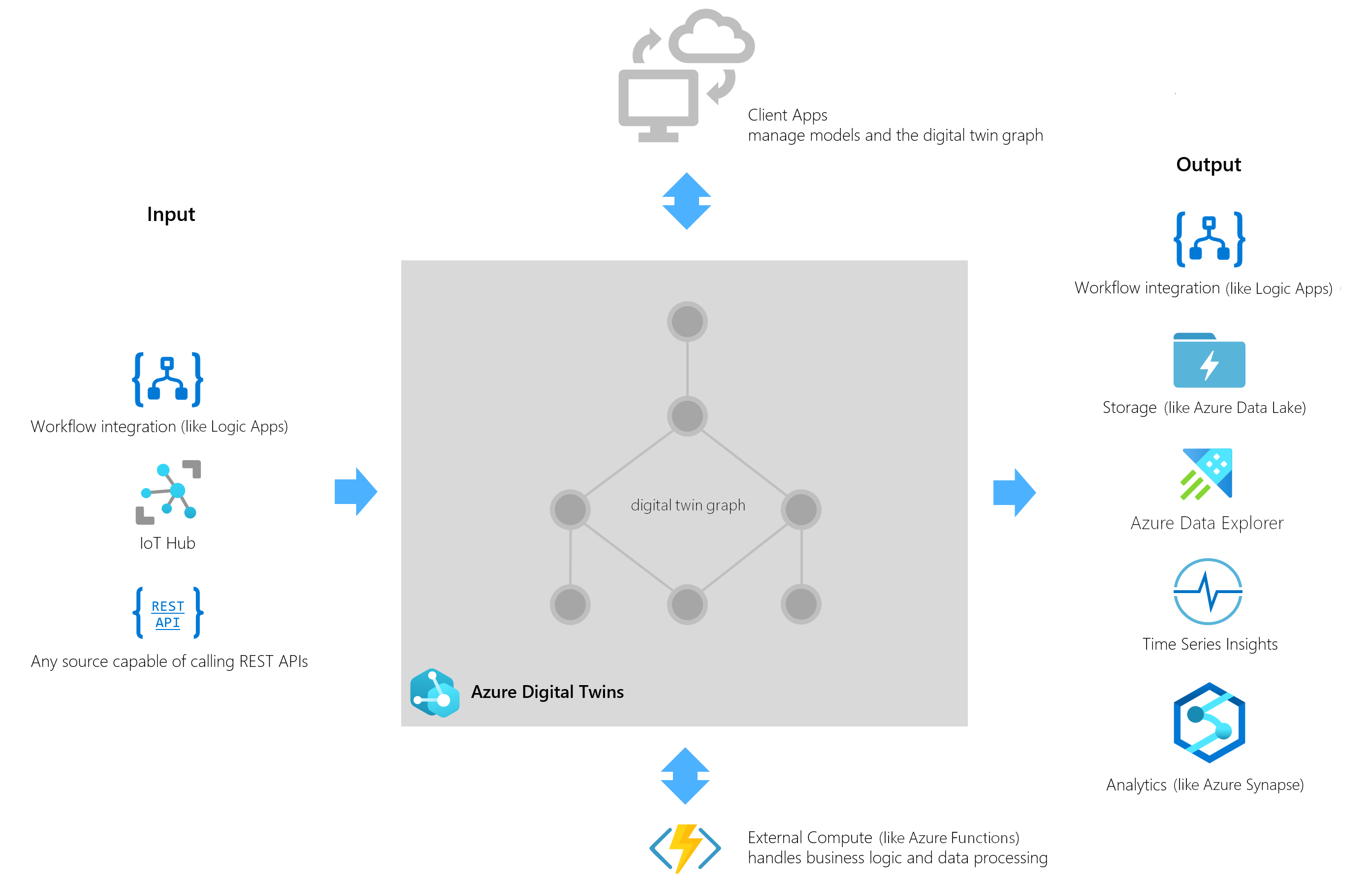Azure Digital Twins
Author: Ronald Fung
Creation Date: 16 May 2023
Next Modified Date: 16 May 2024
A. Introduction
Azure Digital Twins is a platform as a service (PaaS) offering that enables the creation of twin graphs based on digital models of entire environments, which could be buildings, factories, farms, energy networks, railways, stadiums, and more—even entire cities. These digital models can be used to gain insights that drive better products, optimized operations, reduced costs, and breakthrough customer experiences.
Azure Digital Twins can be used to design a digital twin architecture that represents actual IoT devices in a wider cloud solution, and which connects to IoT Hub device twins to send and receive live data.
Take advantage of your domain expertise on top of Azure Digital Twins to build customized, connected solutions that:
Model any environment, and bring digital twins to life in a scalable and secure manner
Connect assets such as IoT devices and existing business systems, using a robust event system to build dynamic business logic and data processing
Query the live execution environment to extract real-time insights from your twin graph
Build connected 3D visualizations of your environment that display business logic and twin data in context
Query historized environment data and integrate with other Azure data, analytics, and AI services to better track the past and predict the future
B. How is it used at Seagen
As a biopharma research company using Microsoft Azure, you can use Azure Digital Twins to create digital representations of your physical assets, such as laboratory equipment, facilities, and research environments. Here are some ways you can use Azure Digital Twins:
Create a digital twin model: Azure Digital Twins allows you to create a digital twin model of your physical assets. You can use the Azure portal or APIs to define the components and relationships of your digital twin model.
Monitor and analyze asset data: Azure Digital Twins allows you to monitor and analyze data from your physical assets in real-time. You can use Azure Stream Analytics or Azure Time Series Insights to analyze your asset data and gain insights into your asset performance.
Simulate asset behavior: Azure Digital Twins allows you to simulate the behavior of your physical assets in a virtual environment. You can use Azure Digital Twins Explorer or Azure Digital Twins APIs to simulate asset behavior and test different scenarios.
Optimize asset performance: Azure Digital Twins allows you to optimize the performance of your physical assets by predicting asset behavior and identifying potential issues. You can use Azure Machine Learning or Azure Functions to optimize asset performance and automate maintenance tasks.
Integrate with other Azure services: Azure Digital Twins can be integrated with other Azure services such as Azure IoT Hub, Azure Event Hubs, and Azure Functions. This allows you to connect your physical assets to the cloud and integrate with other Azure services and applications.
C. Features
Define your business environment
In Azure Digital Twins, you define the digital entities that represent the people, places, and things in your physical environment using custom twin types called models.
You can think of these model definitions as a specialized vocabulary to describe your business. For a building management solution, for example, you might define a model that defines a Building type, a Floor type, and an Elevator type. Models are defined in a JSON-like language called Digital Twins Definition Language (DTDL), and they describe types of entities according to their state properties, telemetry events, commands, components, and relationships. You can design your own model sets from scratch, or get started with a pre-existing set of DTDL industry ontologies based on common vocabulary for your industry.
TIP - DTDL is also used for data models throughout other Azure IoT services, including IoT Plug and Play and Time Series Insights. This compatibility helps you connect your Azure Digital Twins solution with other parts of the Azure ecosystem.
Once you’ve defined your data models, use them to create digital twins that represent each specific entity in your environment. For example, you might use the Building model definition to create several Building-type twins (Building 1, Building 2, and so on). You can also use the relationships in the model definitions to connect twins to each other, forming a conceptual graph.
You can view your Azure Digital Twins graph in Azure Digital Twins Explorer, which provides an interface to help you build and interact with your graph:

Contextualize IoT and business system data
Digital models in Azure Digital Twins are live, up-to-date representations of the real world.
To keep digital twin properties current against your environment, you can use IoT Hub to connect your solution to IoT and IoT Edge devices. These hub-managed devices are represented as part of your twin graph, and provide the data that drives your model. You can create a new IoT Hub to use with Azure Digital Twins, or connect an existing IoT Hub along with the devices it already manages.
You can also drive Azure Digital Twins from other data sources, using REST APIs or connectors to other Azure services like Logic Apps. These methods can help you input data from business systems and incorporate them into your twin graph.
Azure Digital Twins provides a rich event system to keep your graph current, including data processing that can be customized to match your business logic. You can connect external compute resources, such as Azure Functions, to drive this data processing in flexible, customized ways.
Query for environment insights
Azure Digital Twins provides a powerful query API to help you extract insights from the live execution environment. The API can query with extensive search conditions, including property values, relationships, relationship properties, model information, and more. You can also combine queries, gathering a broad range of insights about your environment and answering custom questions that are important to you. For more details about the language used to craft these queries, see Query language.
Visualize environment in 3D Scenes Studio (preview)
Azure Digital Twins 3D Scenes Studio (preview) is an immersive visual 3D environment, where end users can monitor, diagnose, and investigate operational digital twin data with the visual context of 3D assets. With a digital twin graph and curated 3D model, subject matter experts can leverage the studio’s low-code builder to map the 3D elements to digital twins in the Azure Digital Twins graph, and define UI interactivity and business logic for a 3D visualization of a business environment. The 3D scenes can then be consumed in the hosted 3D Scenes Studio, or in a custom application that leverages the embeddable 3D viewer component.
Here’s an example of a scene in 3D Scenes Studio, showing how digital twin properties can be visualized with 3D elements:

Sample solution architecture
Azure Digital Twins is commonly used in combination with other Azure services as part of a larger IoT solution.
A possible architecture of a complete solution using Azure Digital Twins may contain the following components:
The Azure Digital Twins service instance. This service stores your twin models and your twin graph with its state, and orchestrates event processing.
One or more client apps that drive the Azure Digital Twins instance by configuring models, creating topology, and extracting insights from the twin graph.
One or more external compute resources to process events generated by Azure Digital Twins, or connected data sources such as devices. One common way to provide compute resources is via Azure Functions.
An IoT hub to provide device management and IoT data stream capabilities.
Downstream services to provide things like workflow integration (like Logic Apps), cold storage (like Azure Data Lake), or analytics (like Azure Data Explorer or Time Series Insights).
The following diagram shows where Azure Digital Twins might lie in the context of a larger sample Azure IoT solution.

D. Where Implemented
E. How it is tested
Testing Azure Digital Twins involves ensuring that the service is functioning correctly and securely, and meeting the needs of all stakeholders involved in the project. Here are some steps to follow to test Azure Digital Twins:
Define the scope and requirements: Define the scope of the project and the requirements of all stakeholders involved in the project. This will help ensure that Azure Digital Twins is designed to meet the needs of all stakeholders.
Develop test cases: Develop test cases that cover all aspects of Azure Digital Twins functionality, including creating and managing digital twins, defining relationships between twins, and analyzing data from twins. The test cases should be designed to meet the needs of the organization, including scalability and resilience.
Conduct unit testing: Test the individual components of Azure Digital Twins to ensure that they are functioning correctly. This may involve using tools like PowerShell or Azure CLI for automated testing.
Conduct integration testing: Test Azure Digital Twins in an integrated environment to ensure that it works correctly with other systems and applications. This may involve testing Azure Digital Twins with different operating systems, browsers, and devices.
Conduct user acceptance testing: Test Azure Digital Twins with end-users to ensure that it meets their needs and is easy to use. This may involve conducting surveys, interviews, or focus groups to gather feedback from users.
Automate testing: Automate testing of Azure Digital Twins to ensure that it is functioning correctly and meeting the needs of all stakeholders. This may involve using tools like Azure DevOps Pipelines to set up automated testing pipelines.
Monitor performance: Monitor the performance of Azure Digital Twins in production to ensure that it is meeting the needs of all stakeholders. This may involve setting up monitoring tools, such as Azure Monitor, to track usage and identify performance issues.
Address issues: Address any issues that are identified during testing and make necessary changes to ensure that Azure Digital Twins is functioning correctly and meeting the needs of all stakeholders.
By following these steps, you can ensure that Azure Digital Twins is tested thoroughly and meets the needs of all stakeholders involved in the project. This can help improve the quality of Azure Digital Twins and ensure that it functions correctly in a production environment.
F. 2023 Roadmap
????
G. 2024 Roadmap
????
H. Known Issues
There are several known issues that can impact Azure Digital Twins. Here are some of the most common issues to be aware of:
Complexity: Azure Digital Twins is a complex service that requires a deep understanding of IoT and digital twins. It is important to ensure that your team has the necessary skills and expertise to use the service effectively.
Security issues: Security is a critical concern when it comes to Azure Digital Twins. It is important to ensure that Azure Digital Twins is secured and that access to the solution is restricted to authorized personnel.
Compatibility issues: Azure Digital Twins may not be compatible with all platforms, devices, or languages. It is important to ensure that Azure Digital Twins is compatible with the organization’s existing infrastructure before implementation.
Scalability issues: Scalability issues can arise when scaling up or down the service. It is important to ensure that the service can scale to meet the needs of the organization.
Integration issues: Integration issues can arise when integrating Azure Digital Twins with other systems and applications. It is important to ensure that Azure Digital Twins is designed to work seamlessly with other systems and applications to avoid integration issues.
Testing issues: Testing issues can arise when testing Azure Digital Twins. It is important to ensure that testing is carried out thoroughly and that all aspects of Azure Digital Twins functionality are tested.
Performance issues: Performance issues can impact the speed and reliability of Azure Digital Twins. It is important to monitor performance and address any issues that arise. Licensing issues: Licensing issues can arise when using Azure Digital Twins. It is important to ensure that the appropriate licensing is in place to avoid any legal issues.
Overall, Azure Digital Twins requires careful planning and management to ensure that it is functioning correctly and meeting the needs of all stakeholders involved in the project. By being aware of these known issues and taking steps to address them, you can improve the quality of Azure Digital Twins and ensure the success of your project.
[x] Reviewed by Enterprise Architecture
[x] Reviewed by Application Development
[x] Reviewed by Data Architecture